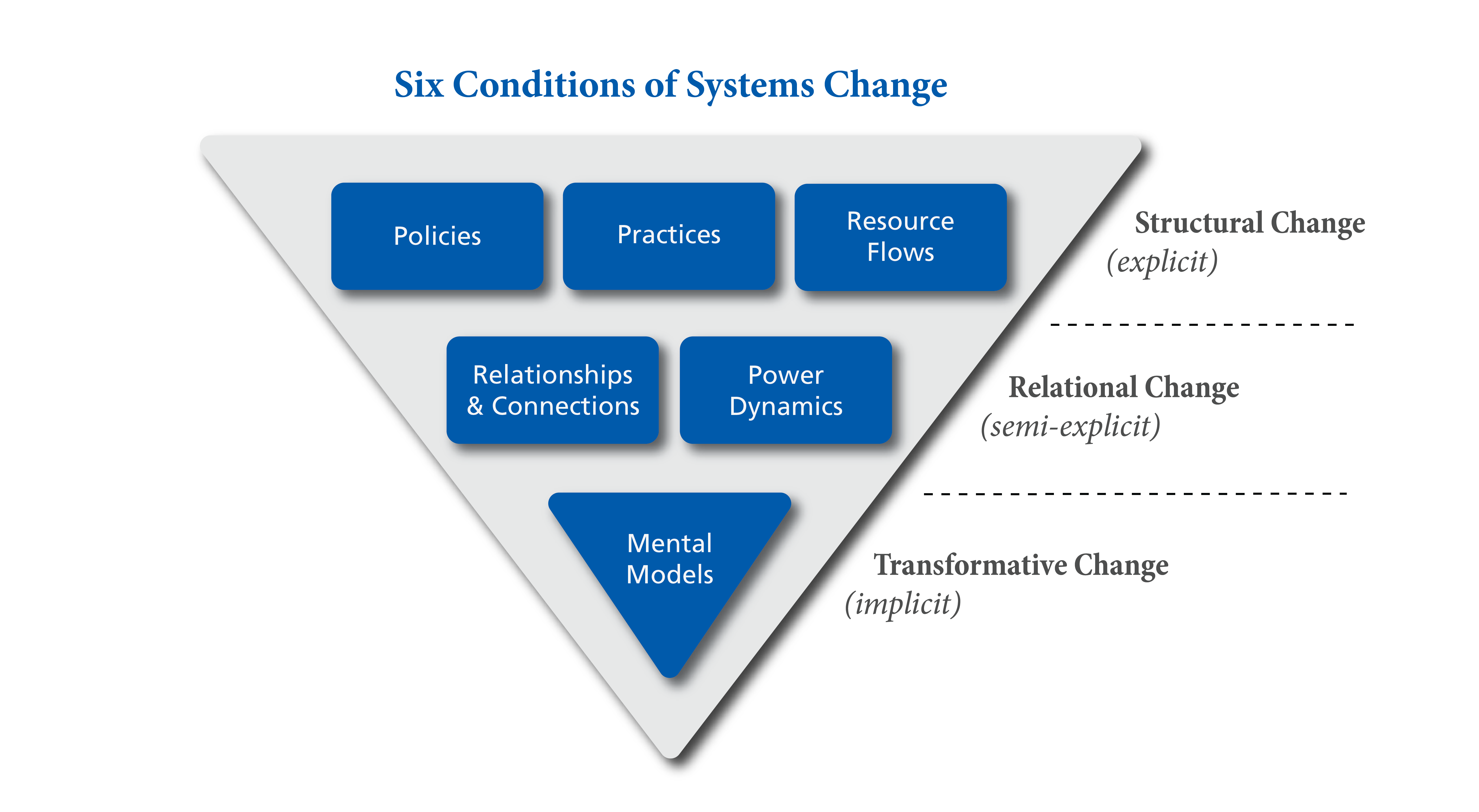In our work with foundation and nonprofit leaders over the past few years, we have heard an increasing number of questions about systems change as leaders in the social sector struggle to make sense of what can often seem like an abstract, theoretical notion.
Mark Kramer, Peter Senge, and I recently published a new article, The Water of Systems Change, with the goal of making systems change more accessible, given its importance to achieving large-scale progress on social and environmental issues.
We hope that seasoned systems change practitioners will find this article to be a helpful resource to share with your staff, board, and others in your network who might be less familiar with the concept.
For those newer to systems change, we hope this article helps you gain a deeper understanding of the key leverage points in changing the systems you care about.
But how do we get from the written page to actually using the insights of the article? One way is to begin applying the article’s main framework—which we affectionately refer to as “the inverted triangle”—to the issue you are working on.

To help with this, we have developed a new tool oriented around assessing the 6 conditions that typically hold social and environmental problems in place, and doing this from the perspective of both external and internal conditions for change.
The tool is not intended to provide prescriptive answers. Rather, using the tool can be a new way for you and others working on your issue to think in a disciplined and holistic manner about what’s required to change your system.
We have piloted the use of this tool with several of our clients and in a workshop at the annual Social Impact Exchange conference in New York. People who’ve used the tool say it’s helpful to think about the full range of ways that a system needs to be shifted to create change.
Considering the 3 levels of systems change in the framework also allows those using the tool to explore more deeply the second and third levels of change—specifically the 3 less explicit conditions:
- Relationships and connections
- Power dynamics
- Mental models
For those using the tool, conversation often gets richer when participants begin to recognize the importance that these “below the surface” conditions play in their work, and the leverage they can have by paying greater attention to these 3 areas.
Additionally, we have also included a frame for considering what needs to change internally, within yourself and within your organization, for you to be successful externally in the work. The focus is on the same 6 conditions, just applied internally. As Bill O'Brien said, “The success of the intervention is based on the interior condition of the intervener.”
Tips for using the tool
- Try to avoid doing this exercise alone. The greater the number of different vantage points you can include, the better the insights from the exercise will be.
- A facilitator may be a useful addition to the group to optimize for balance and reflection in the conversation and assessment.
- Allocate 3-4 hours for the tool. It’s ideal to give your group time to process and reflect before diving back into the work day.
- You may be tempted to skip Part II of this exercise—the assessment of what you and your organization might be contributing to the problem you are trying to solve. This is a critical part of the work, so we highly recommend you stick with it for Part II!
- Being the Change, which highlights 12 internal practices that foundations are using to transform their impact, may be a useful resource to go along with Part II.
- If your group finds this exercise useful, you can explore more tools for group learning and understanding systems change in Facilitating Intentional Group Learning.
I hope you enjoy using the tool and it takes you and colleagues to a different, deeper place with regards to engaging with systems change. As always, we would love to hear any feedback you might have or any insights that come while you’re using the tool that could be useful for others.
Download The Water of Systems Change: Action Learning Exercise >
Learn more about FSG’s System Thinking services >
